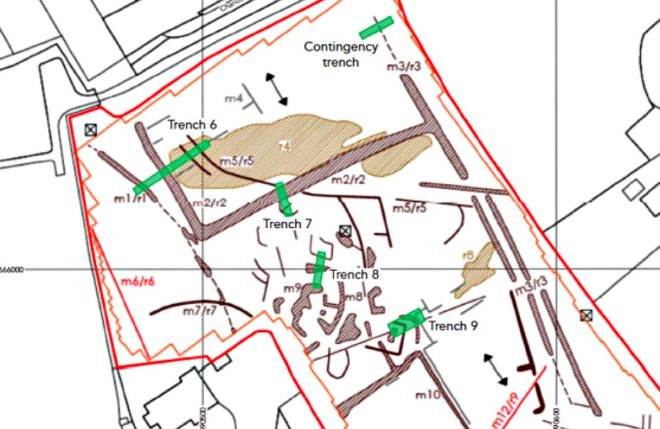Historical sources suggest that Aebbe’s monastery was located just a few days north of Lindisfarne, near St Abb’s Head at Coldingham. Over the years, a few small glimpses – of burials, and of sculpture – have shown up, but firm evidence of the monastery has never been found at the suggested location.
But then, in 2014, new hope of finding it emerged through a geophysical survey, which revealed the footprints of a number of possible Anglo-Saxon structures at a slightly different location, close to the ruins of Coldingham’s much later medieval priory.
There is a strong suggestion from the geophysical survey that there are areas where we might find buildings and perhaps even evidence of metal working or tanning activity. The metal detecting survey yielded hundreds of objects, some of which date to the medieval period.
In 2017, DigVentures and a hardy crew of supporters opened some small ‘test pits’ to see if anything was really there. The results confirmed that there are traces of walls, ditches, animal bones and pottery.
All we need to do now is open up and excavate a larger area to gather more evidence and understand what it is we’ve really found.
The problem is that we can’t dig the entire site – not in one season anyway. So in the true spirit of collaborative archaeology, we’ve done something few archaeologists would dare to do: we asked our followers to look at an interpretative map of the geophysical survey and help us narrow our search.
The excavation season for 2018
Nearly 700 people responded to our call for help, and we used the results to help shape the location of trenches for our first season of excavation on the site. You can look at the map below to see what we chose, and then click here to see exactly what we found in each trench.
